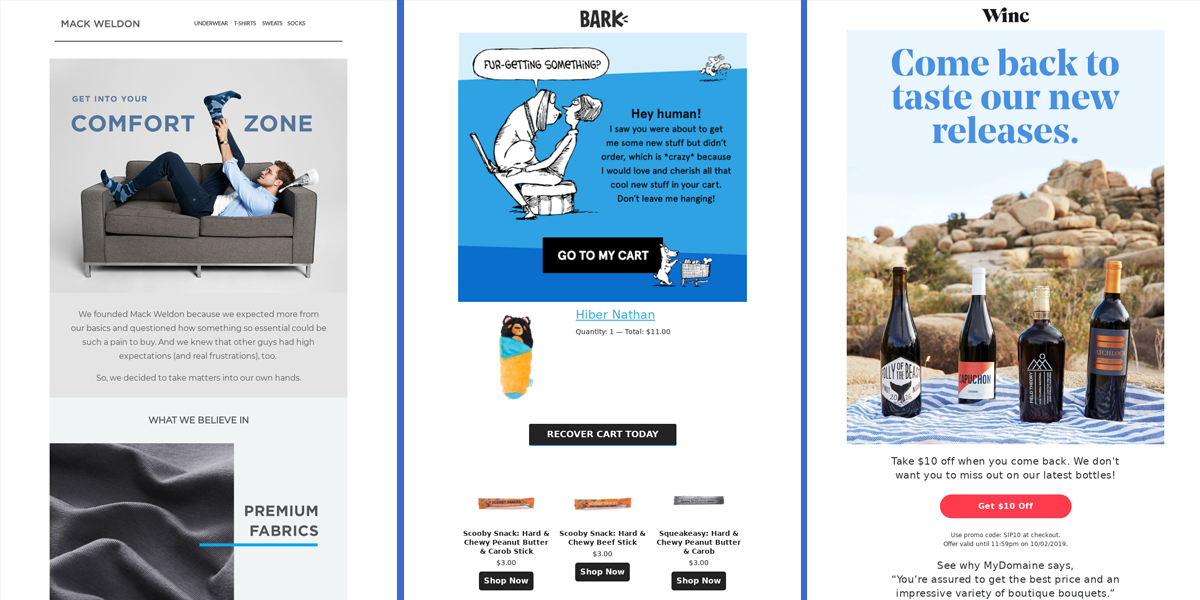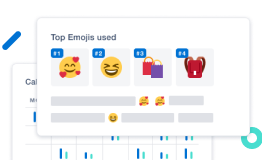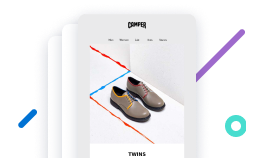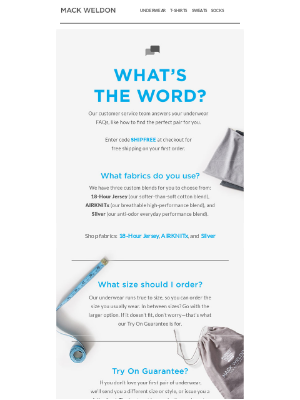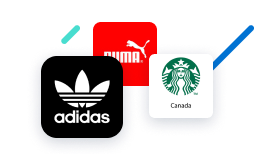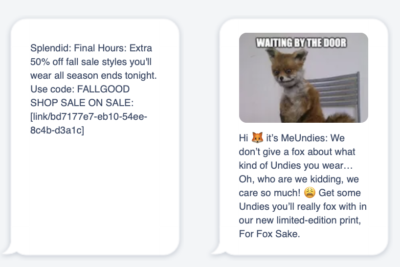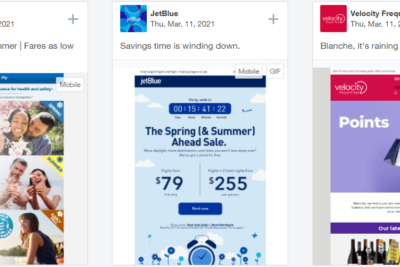If you’re in ecommerce and just getting started in email marketing, you’ll need to set up several ecommerce email sequences to ensure your program’s long-term success.
Triggered sends, or automated email sequences, are different from calendar sends because they are triggered by events on-site: a customer orders a product, a known user adds a product to the cart, or a new user subscribes via a popup. In fact, automated emails generate 152% higher click rates than typical calendar sends.
While you have many email journeys to choose from, we recommend you set up these four first:
- a welcome series
- a cart abandonment series
- a purchase series
- a win-back series
Why these? Because these four types of triggered series typically generate revenue or engage subscribers at different parts of the ecommerce marketing funnel.
In this article, we’ll dig into these four email sequences and we’ll also share some great email automation examples for each of them.
Let’s get started!
1. Welcome or Onboarding Series
If there is just one type of ecommerce email automation you set up, let it be a welcome series. The welcome email sequence typically gets high engagement because it’s sent as soon as a user subscribes to your email list. Actually, around 74% of new subscribers expect a welcome email as soon as they subscribe.
Equally great for engagement are onboarding series. Where welcome series welcome new email subscribers, onboarding series welcome people who’ve just created an account on your website. Together, welcome and onboarding emails tend to be 86% more effective than a newsletter send in terms of engagement.
Think of your welcome email as your first impression: it’s usually an informal introduction to your company’s products and brand. Some brands also include a welcome offer in their initial emails to help convert new subscribers to purchasers. In fact, welcome emails that have an offer included drive 30% more revenue per email than those that don’t.
Visit our welcome and onboarding email examples pages for more details on getting started with these.
2. Purchase Series
You may not be aware of it, but if you have an ecommerce store you likely already have some type of purchase series set up, although it may live on Shopify or a similar platform and not in your email service provider (ESP). While purchase sequences are not big revenue drivers, they are essential to creating a positive customer experience. Because of their informative nature, they help customers check on and track their orders and prevent your customer support team from being flooded with the same type of questions.
Purchase emails contain everything from purchase receipts to shipping confirmations, delivery information, and leave-a-review requests post-delivery. They’re typically viewed as transactional emails as they contain vital information about purchased items.
That also means that some people who receive a transactional email may not be on your typical email marketing subscription list so post-purchase emails are a great place to include more information around rewards programs and other products to (hopefully) get them back onto the email marketing list.
Visit our purchase series email examples pages for more details on how to get started with these:
- purchase receipt examples
- shipping confirmation examples
- delivery confirmation examples
- review request examples
3. Cart Abandonment Series
Cart abandonment flows are typically the most effective series for generating revenue aside from the welcome series due to the fact they’re triggered by a high-intent action: a known visitor on the site adds something to their cart and then abandons it before purchasing. According to a Klaviyo study, cart abandon emails generate an average of $5.81 per recipient.
These shoppers have already expressed interest so a follow-up email or two (with a slight discount) is likely to drive strong revenue. Not sending one is practically leaving money on the table.
Cart abandonment email sequences typically take off 30 minutes to a few hours after a known user abandons a cart. Note: This does require your email service provider (ESP) to be connected to your ecommerce store, like Shopify. Once you have the two connected, you can trigger this type of series and even dynamically pull in the item that was left behind.
Visit our cart abandonment email examples page for more details on how to set these up.
4. Win-back Series
A win-back email sequence is geared toward inactive subscribers who have purchased in the past. These emails are typically a final effort to re-engage past customers and make them purchase again. Like welcome emails, win-back emails often contain an offer to incentivize people to shop.
According to a study from Marketing Land, a dollars-off offer performs 2x better than the alternative percentage off discount. So consider adding a dollars-off incentive if you’re setting up your win-back campaign. In addition to driving past purchasers back to the website, win-back emails also give you the chance to collect feedback and maintain good list health (driving users to update their email preferences so you’re not emailing stale contacts).
Visit our win-back campaign examples page for ideas on how to create a great win-back sequence.
What about subscription brands?
In general, welcome, purchase, cart abandonment, and win-back series are the top ecommerce email sequences to have. That is not different for subscription brands, but they do well to add one other type of sequence to their essentials: the cancellation sequence.
Cancellation sequences target people who have chosen to cancel their subscription. Like win-back sequences, they aim to get people to purchase again, but win-back sequences are usually triggered when a customer hasn’t bought anything in a while whereas cancellation sequences target those who have actively canceled their subscription.
There is somewhat of a difference as the action of not purchasing is more passive than the action of stopping a paid subscription.
Now that we’ve covered the most important ecommerce email sequences, let’s have a look at four examples from real ecommerce brands.
Ecommerce Email Sequence Examples
How Mack Weldon welcomes new subscribers
This welcome email example from Mack Weldon provides an up-close image of the brand’s premium materials and what makes its products stand out. In addition to product imagery, the email has a section featuring best sellers to drive users back to product pages.
Welcome to Mack Weldon.
Mack Weldon’s second email in the welcome series, sent several hours after the initial welcome email, contains a personalized note from Maurice at Mack Weldon and a free-shipping code. This email has a more personalized look and feel as it doesn’t come with the typical design frills we see in HTML emails.
Free shipping on your first order
The third email, sent five days later, highlights frequently asked questions, including the try-on guarantee. By highlighting and answering some of these FAQs, Mack Weldon helps alleviate some concerns shoppers might have by buying online.
Some answers—and free shipping.
The brand continues the welcome series with three more emails over the next 14 days, highlighting recent customer reviews, try-on guarantee, and rewards program.
How Brooklinen informs shoppers post-purchase
This purchase receipt example from bedding company Brooklinen doesn’t just include the essential receipt details. It also promotes the brand’s VIP program to encourage those who might not be on the email list to sign up for VIP deals as well. And for shoppers who are already subscribed, the email highlights other items they may want to check out.
Order #BL711697810520 confirmed
While the second email sent post-purchase typically is a shipping confirmation, Brooklinen sends an email about 4 hours after the order is placed to alert the customer about potential shipping delays. We love that this email includes a printable image to hang in your window during COVID-19 times to brighten your neighbor’s day. We expect this email to go away once normal shipping resumes, but we think it’s so nicely done, we had to share it!
Your order may be delayed
Ah, now the shipping confirmation email follows! The email send time typically varies depending on what type of shipping you select. While Brooklinen did preface that shipping might be delayed, this email comes only two days later. We love that they highlight the tracking link CTA in the very top section of the email so shoppers can quickly link to the tracking (which is what people care about anyway).
Your order has shipped
There are three additional emails sent from Brooklinen following the shipping confirmation including. One promotes their rewards program (reminder to use points), another carries the delivery confirmation, and the third requests a review. Overall, we’re impressed with the detail and customer experience provided in this email sequence.
How BarkShop chases cart abandoners
BarkShop sends this BarkShop’s cart abandonment email an hour after someone abandons their cart. The email dynamically pulls in the product left behind as well as a quick CTA driving customers back to the website to complete their order. BarkShop also adds additional products to shop to bring people back to the website and (hopefully) increase the AOV (average order value).
Leave something behind?
BarkShop sends a follow-up email the next day about the shopper’s cart. While this message is largely the same, it does express more urgency than the initial email. Something else that stands out in both of these cart abandonment emails is the bottom section directing people to the customer service team should shoppers have any questions.
Your cart is about to disappear!
How Winc wins back customers
The following email from wine subscription company Winc is short, sweet, and to the point, but also contains a $10 off coupon to entice shoppers back to the site. Notice how this discount is using the dollars-off approach we recommend above.
MailCharts, you don’t want to miss out on these bottles 🍾
This email is followed up with three more emails promoting the $10 off over the next few weeks before the discount expires. These emails all have a look and feel similar to the first email with limited text to drive customers back to the website. Below is the second email sent seven days after the first.
MailCharts, let’s catch up over a glass of wine & $10 off
More Inspiration for Your Essential Ecommerce Email Sequences
With a MailCharts account, you can access more ecommerce email sequences from top brands like the ones shown above as well as other journeys like booking abandonment, subscription abandonment, browse abandonment, loyalty, and rewards emails, birthday emails, and onboarding emails for new subscribers.
